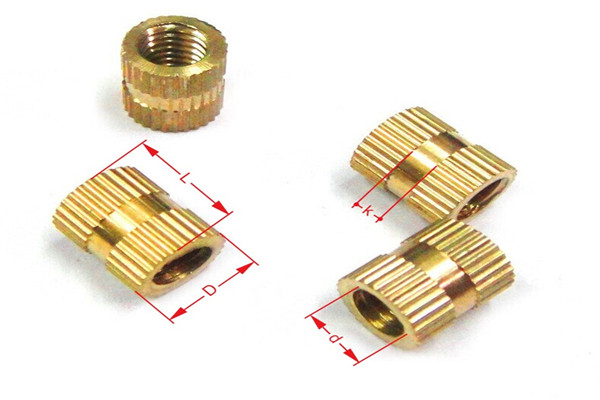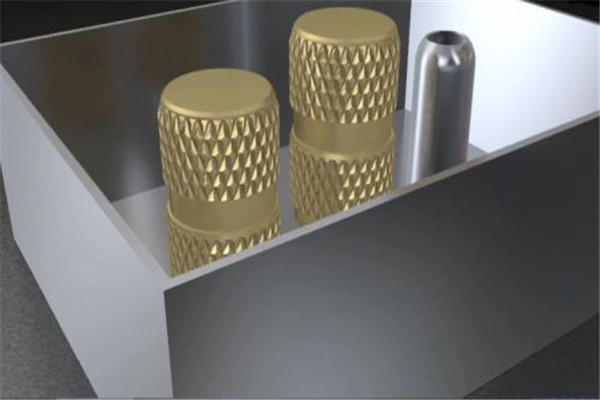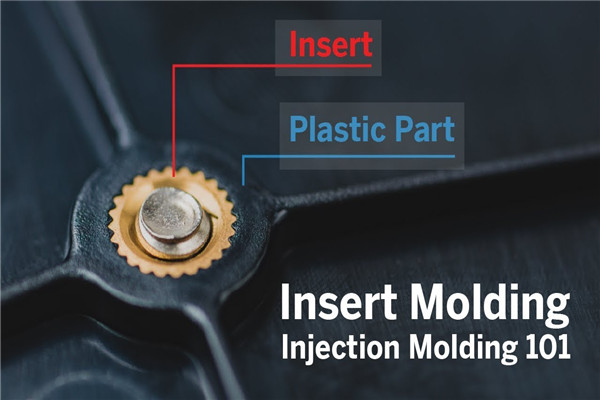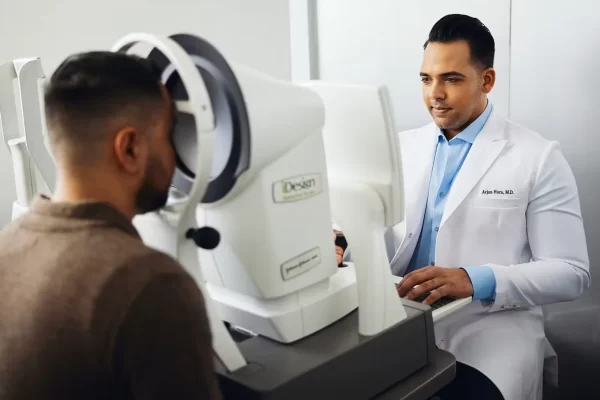Fasteners are the most widely used general-purpose parts that have been integrated into all aspects of human production and life, becoming one of the common parts of modern human production and life supplies.
For example, the average number of fasteners in a cell phone is not less than 10. A liquid television set in the average of not less than 20 fasteners. A computer host in an average of not less than 25 fasteners. A car has about 580 kinds, close to 500 different specifications of fasteners.
Inserts are one of the types of fasteners. Today let’s talk about the application of brass insert fasteners.
Why brass is used for the material of the brass insert?

(1) Brass insert processing material is generally brass, such as H59, H62. Its biggest advantage is not easy to rust, corrosion prevention, easy thermal conductivity, and electrical conductivity, etc. In the brass insert processing without special to do electroplating and other surface treatment process, greatly improving the service life of the product also allows customers to save some production costs.
(2) Brass is softer than stainless steel hardness, which is easier to cut in the copper nut processing production. Thus improving production efficiency and delivery time to meet customer requirements.
(3) Brass is easier to press a variety of shape patterns and rolled nut threads. Such as knurled brass insert, net flower brass insert. The appearance of brass insert processing is more exquisite and beautiful, and the inner thread of the insert is clearer and more complete. Customers in the subsequent use of a higher degree of matching.
(4) Brass has good thermal conductivity, such as the use of heated brass nuts embedded after the thermal conductivity to play a role in making brass nuts quickly become hot, speeding up the efficiency of work. On the other hand, through heat conduction, the plastic parts around the hole become soft, which is conducive to pressing into the hole.
Types of the brass insert

The brass insert can be classified into three main categories according to its application. Machine insert, fastening insert, and special-purpose insert.
– Machine inserts are mainly used in fastening threaded hole parts, screws: a class of fasteners composed of two parts: the head and the screw. With a through-hole between the parts of the fastening connection, do not need a nut.
– Tightening screws are mainly used to fix the relative position between two parts.
– Special-purpose screws, such as lifting ring screws for lifting parts. Bolts, studs, or machine screws, are used to fasten the connection of two parts, so that it becomes a whole.
Common installation process of the brass insert
The brass insert is a device that is inserted into an object to provide a threaded hole. The threaded hole can then be used to attach a bolt or other item that requires a threaded hole. The brass insert is easy to install and can be used on a variety of materials.
Hot pressing process for inserts

The hot pressing process is suitable for thermoplastics, with high overall performance and low process costs. The hot pressing process requires a pre-formed hole in the plastic part. The hole diameter is specified by the manufacturer of the nut insert and is slightly smaller than the outside diameter of the nut. The hole can be straight or tapered. The front diameter of the nut is slightly smaller than the hole diameter to help position the insert.
During the hot-pressing process, the brass insert is heated to a certain temperature by the hot mold. As it is inserted into the plastic part, the nut melts a small portion of the plastic around the hole. The softened resin flows into the knurled teeth and then solidifies and hardens to form a strong bond with the nut. Because the process is easy to control, relatively inexpensive, and easy to automate (multiple nuts can be pressed in at once), the hot pressing process is a common nut setting process for thermoplastics.
Ultrasonic inlay process

The ultrasonic inlay process is suitable for thermoplastics with high overall performance and fast production speed.
Ultrasonic inlay also melts a portion of the plastic around the hole, with a larger melting area than the hot pressing process. By means of ultrasonic high-frequency vibration (15-30Khz), the plastic in contact with the nut is subjected to high-frequency strain and stress, which generates heat to melt the plastic. The ultrasonic inlay process is faster than the hot pressing process. The disadvantage is that it may cause problems with the scuffing of the nut end face.
Injection molding process for brass inserts

The nut insert injection molding process is suitable for both thermoplastic and thermoset plastics. It has the best pulling force. In each injection molding process, the nut is placed correctly on the pin and into the mold. By this method, the resin completely fills the outer surface of the nut and is able to create the best possible bond strength. However, nut injection molding significantly increases mold complexity and development costs, and the need to insert the pin and nut each time increases the process cycle time. (Diazepam)
Conclusion
Brass insert applications are also present in our prototype and production projects. Some of our customers require us to tap and install the brass insert as per the drawing. For example, CNC machined ABS parts with M3x6 brass inserts, or by injection molding process to press the brass inserts into the parts in the appropriate position.





